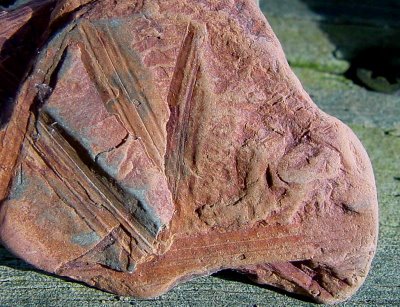
While merino wool has become a popular fabric choice for bicycle clothing, it seems that many manufacturers choose to use wool/polyester blends instead of pure merino, believing that the right combination can deliver the best results. Rapha and Road Holland use a fabric called SportWool. Shutt Velo Rapide usesMerinoPerform. Swobo refers to their blend as Merino 753. I am sure there are other proprietary names, but judging by the descriptions of these fabrics the idea is essentially the same: The blend is formulated to have wool fibers on the inside and polyester fibers on the outside, which the manufacturers believe delivers ideal performance properties.

Observing the way these blends have been marketed over the past couple of years, I've noticed an interesting dichotomy. The fiber content shows that merino comprises only 20-40% of it, whereas polyester comprises 60-80%. Yet the names of the blends inevitably feature the words "merino" and "wool," with no mention of the dominant synthetic content. To me this suggests that the manufacturers are eager to promote their use of wool given its current popularity, but in fact do not believe it is possible for wool to be a performance fabric - hence the idea that wool needs to be improved upon (by adding polyester) in order to be used in cycling clothing. All of this has made me highly skeptical about the wool/poly blends. But over the past few months I've had the opportunity to wear several garments made of these fabrics, and gave them an open-minded try. What follows are my impressions.

Having joined a local cycling club last December, I receivedtheir club jersey (right), which happens to be made by Rapha out of the aforementioned SportWool. A couple of months later, I received some items for review from Shutt Velo Rapide, including the Women's Training jersey (left), made of MerinoPerform. Both jerseys are 40% wool, 60% polyester. The texture and weight of the fabrics appear to be identical.

On the outside, the wool blend fabric is smooth and has a slight sheen to it.On the inside it is matte, soft and slightly textured. To the touch, neither the outside nor the inside feels like true merino, but the inside comes closer.
I have worn both jerseys over a (thin, 100% wool) base layer as well as directly next to my skin. I am sensitive to polyester was was curious whether this blend would engage that sensitivity.

In cooler weather, over a base layer, both jerseys feel pretty good. In fact, as mid/outer layers, I have to admit they regulate temperature better for me than the pure wool equivalents I own. I do not experience any sensitivity wearing either of these jerseys over a wool base layer.
However, worn directly next to skin I found the jerseys inferior to the pure wool alternatives. In warm weather the wool/poly blends do not breathe as well for me, and I feel clammy wearing them. I also find them less versatile for temperature regulation when worn on their own. On one ride I found myself too hot in the jersey at 85°F and too cold at the end of the ride at 65°F. I know that my long sleeve 100% wool jerseys are more versatile over the same temperature range.

Rapha, Shutt Velo Rapide and Road Holland each offer lighter weight versions of their wool blend jerseys in an airy eyelet fabric. I've tried the one by Shutt Velo Rapide (above) and it did keep me cool in hot weather. The downside was that as soon as the temperature dropped a bit, I felt chilly. In my experience, pure wool is just more versatile in this respect.
As far as polyester sensitivity, I experienced it with the Rapha jersey when worn directly next to skin, but not with the Shutt Velo Rapide jerseys. I think the reason is simply that the former fits me tighter, so it comes into closer contact with my skin. Either way, after wearing the Rapha jersey in 80°F weather without a base layer underneath, I promptly got a rash under my arms. To be safe, I won't be wearing either of the wool blend jerseys without a base layer again.

Finally, some are probably wondering about the BO factor. Wool is well known for its odor-resistant properties, whereas polyester is known for quite the opposite. I found these jerseys to be somewhere in the middle in that respect, but closer to polyester.
In summary, I have learned that for me the wool/polyester blends function extremely well as outer and mid layers in cool to freezing temperatures. However, they do not function well for me when worn directly next to skin in warmer temperatures - both failing to provide the same temperature regulation as pure wool and activating my polyester sensitivity when coming into close contact with my body.
I am curious about others' experiences with wool/polyester blend fabrics from these and any other manufacturers. How do you find them for cycling compared to 100% wool or 100% synthetics?
































